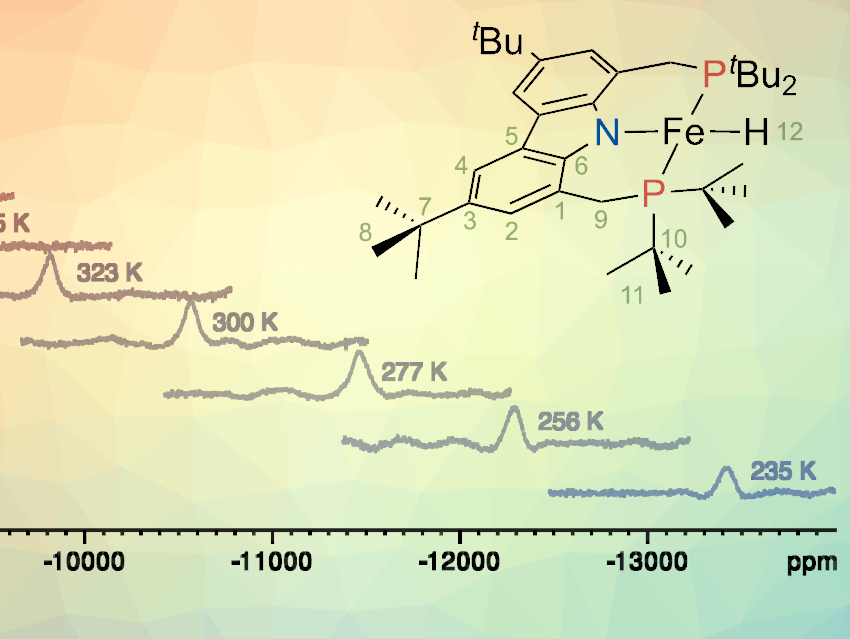Many of the earth-abundant 3d metal complexes used in homogeneous catalysis have open-shell ground states with unpaired electrons. This can make their characterization in solution challenging. While nuclear magnetic resonance (NMR) spectroscopy of paramagnetic molecules is an established method, the interaction of the nuclei with the unpaired electrons heavily impacts the corresponding spectra, resulting in large chemical shifts and rapid nuclear relaxation. Such rapid relaxation rates, which depend strongly on the distance of the nucleus of interest from the paramagnetic center, can lead to extensive signal broadening, often beyond observability.
Markus Enders, Lutz H. Gade, University of Heidelberg, Germany, and colleagues have detected a 31P NMR signal of a phosphorus atom directly coordinated to a metal atom in a square-planar iron complex with a paramagnetic ground state. The complex is [tBu(PNP)Fe–H], (pictured, PNP = a carbazole-based pincer ligand). The 31P nuclei were found to resonate at a record chemical shift beyond –10,000 ppm (percent range of the spectrometer frequency).
A detailed analysis of the molecular magnetism of the iron pincer complex using a combination of various spectroscopic techniques and quantum chemical calculations revealed a large zero-field splitting (a splitting of degenerate states in the absence of a magnetic field) with pronounced rhombic anisotropy. The latter partially suppresses nuclear paramagnetic relaxation enhancement (PRE) in the magnetic fields used in NMR spectroscopy, which makes it possible to observe NMR signals of directly
metal-bonded atoms. This study sheds new light on what was previously thought to be a “blind spot” of NMR spectroscopy, i.e., the observation of nuclei directly bonded to a paramagnetic center.
- Observability of paramagnetic NMR signals at over 10 000 ppm chemical shifts,
Lutz Gade, Jonas C. Ott, Elizaveta A. Suturina, Ilya Kuprov, Joscha Nehrkorn, Alexander Schnegg, Markus Enders,
Angew. Chem. Int. Ed. 2021.
https://doi.org/10.1002/anie.202107944


